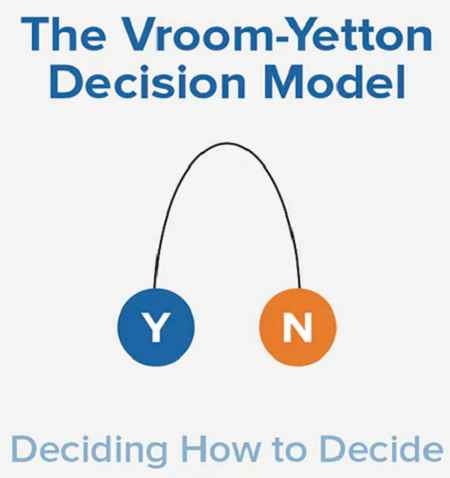Decision-Making Frameworks
Introduction
Decision-making is pivotal in change management and is a skill that can be developed.
Sometimes decision-making is done by individuals; other times by group consensus.
Each decision presents its own challenges.
The 5 frameworks below can help in guiding your decision-making process, ie
"...frameworks designed to help you analyse possible solutions to a problem so that you can make the best possible decision..."
Range, 2023a
Sequence in decision-making
"...- establish a positive decision-making environment
- generate potential solutions
- evaluate solutions
- decide
- check your decision
- communicate and implement..."
MTCT, 2023a
When making decisions it is essential to not let your biases (conscious and unconscious) hinder your process.
"...Biases might be rooted in prior experiences, but that does not inherently mean they are grounded in facts. In many cases, avoiding biases is also key to making an ethical decision since biases can sometimes cause you to mistreat certain people and their ideas..."
Range, 2023
(for more details, see elsewhere in the Knowledge Base)
Frameworks (5)
Need to match the appropriate framework with your unique organisational situation.
i) rational decision-making (involves identifying the criteria that will have the most impact on your decisions outcome and evaluating possible alternatives against those criteria:
- define the problem (identify the issues that need solving and the goal you are trying to achieve with your decision)
- define criteria (define the criteria you are looking for in your decision)
- weigh the criteria (prioritise the factors are most important to least)
- generate alternatives (develop a few alternatives that meets the criteria)
- evaluate your alternatives (for each alternative solution evaluated against your criteria)
- choose the best alternative (after evaluating all possibilities, select the option that best suits your situation)
- implement the decision (put your decision into practice)
- review your results (monitor and evaluate the impact of your decision)
NB this framework is best used when you have many options to consider and plenty of time to evaluate them.)
ii) bounded rationality decision-making (sometimes when you need a quick decision,, ie time constraints, a 'good enough' option is suitable, ie this
"...model dictates that it should limit your options to a manageable set and then choose the first option that meets your criteria rather than conducting an exhaustive analysis of each one..."
Range, 2023a
Going for the first option that meets your minimum threshold is called 'satisficing'.
This framework is applicable when inaction is more costly than making the best decision and when time is an issue.
iii) Vroom-Yetton decision-making (designed for collaborative decision-making; using 'yes' or 'no' answers in a series of questions; utilises a decision tree to help with decision-making based on the answers;

(source: MTCT, 2023)
This approach involves 7 questions are around quality, commitment, problem structure, leaders' information, goal congruence and team member conflict, eg

(source: MTCT, 2023)
iv) intuitive decision-making (as an alternative to rational and emotional decision-making; works best when limited information exists to consider and you are deeply experienced in the matter at hand, ie cases
"...where there isn't enough information for you to make a more informed decision and instances where your own experience is more reliable than the available information......also useful in cases where you don't have a lot of time and need to make a decision quickly..."
Range, 2023)
v) recognised prime decision-making (akin to intuitive decision-making, it relies heavily on experience and instinct; it is more structured and includes the following 3 steps:
- analyse available information to identify possible solutions (brainstorm possible solutions using available information)
- understand possible scenarios (mentally evaluate possible scenarios)
- make a decision (mentally visualise the best solution and its outcome)
It works best where
"...- you don't have a lot of information available
- you trust your instinct and experience
- time constraints are a factor..."
Range, 2023
"...using this model effectively does require a certain degree of creativity and imagination since you have to visualise the outcome of each possible solution..."
Range, 2023)
